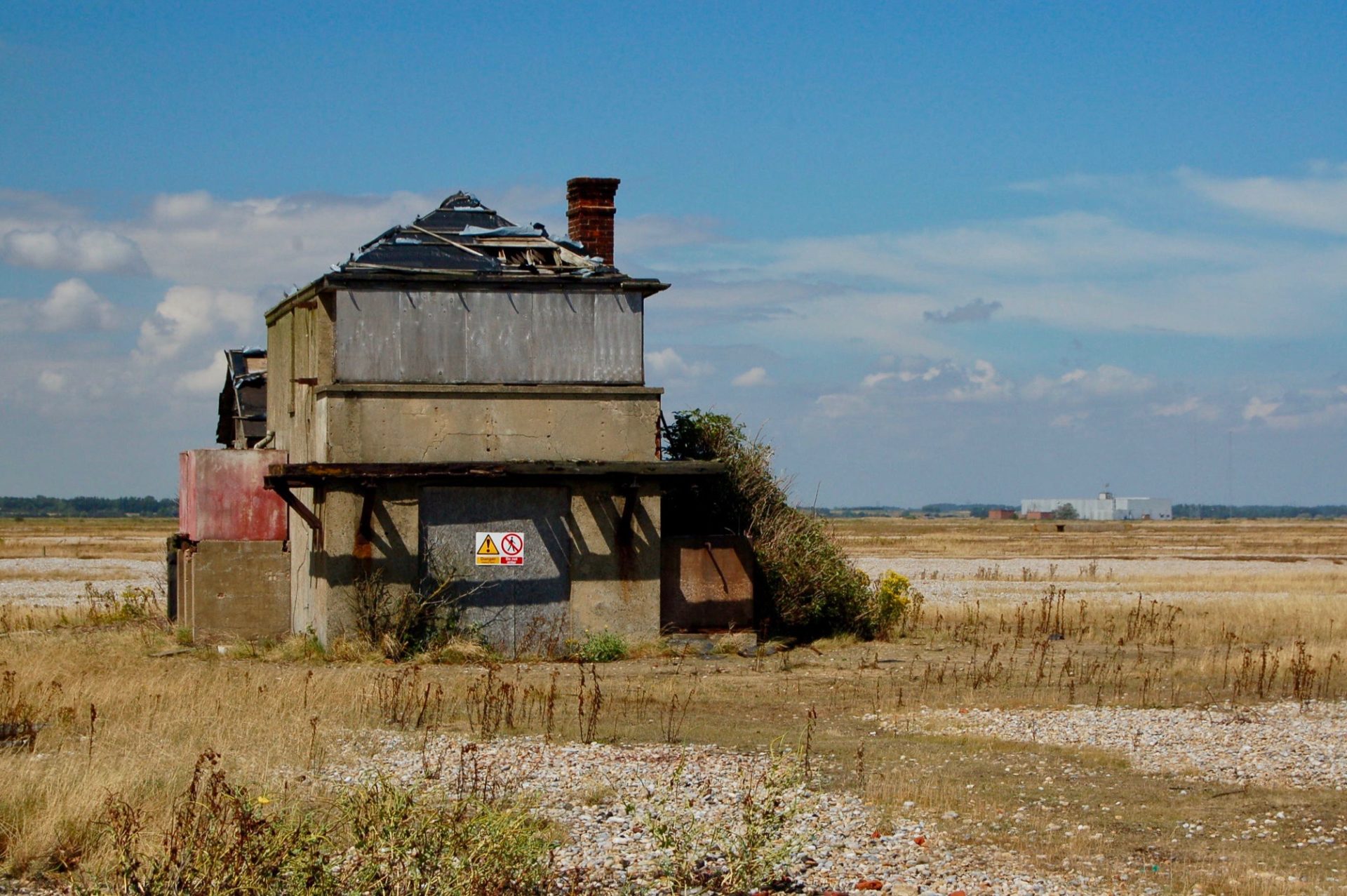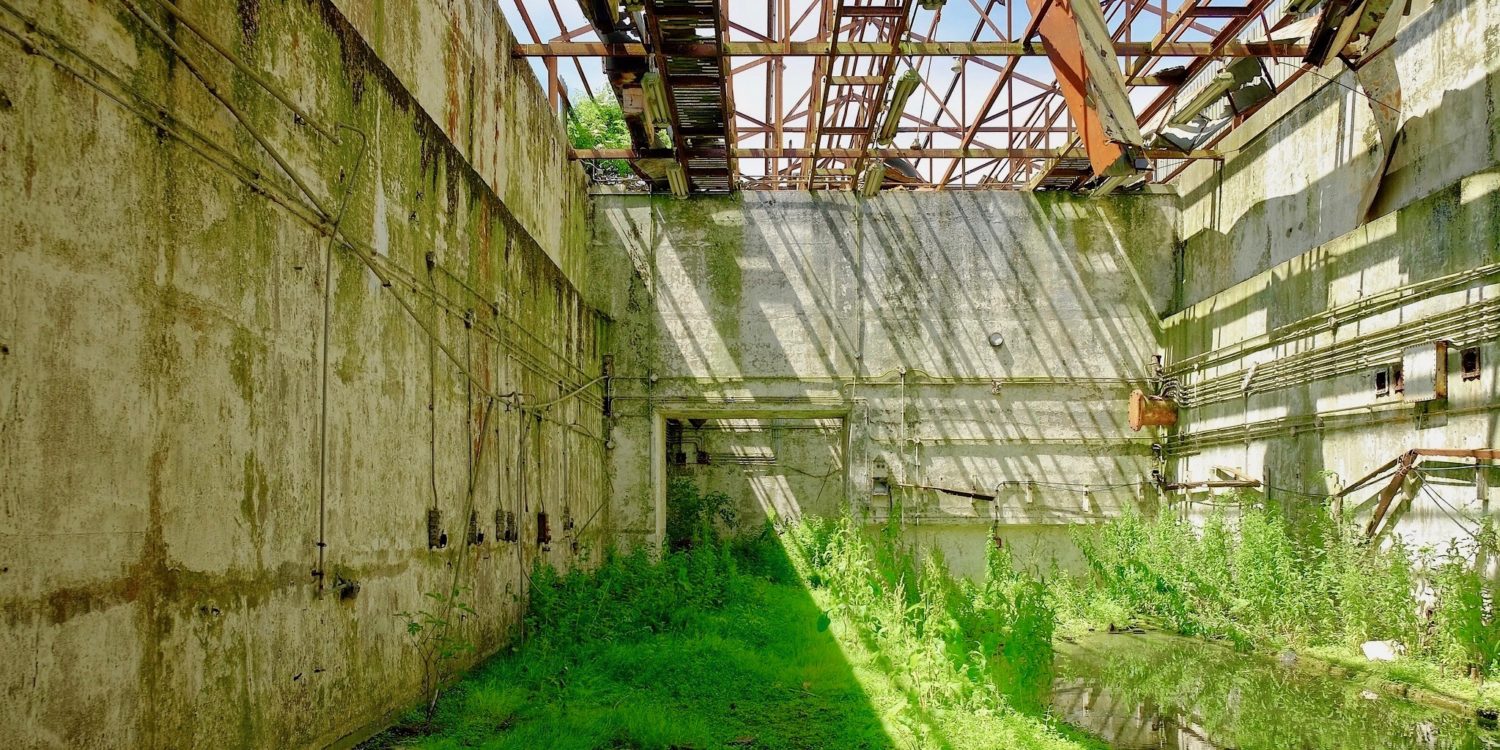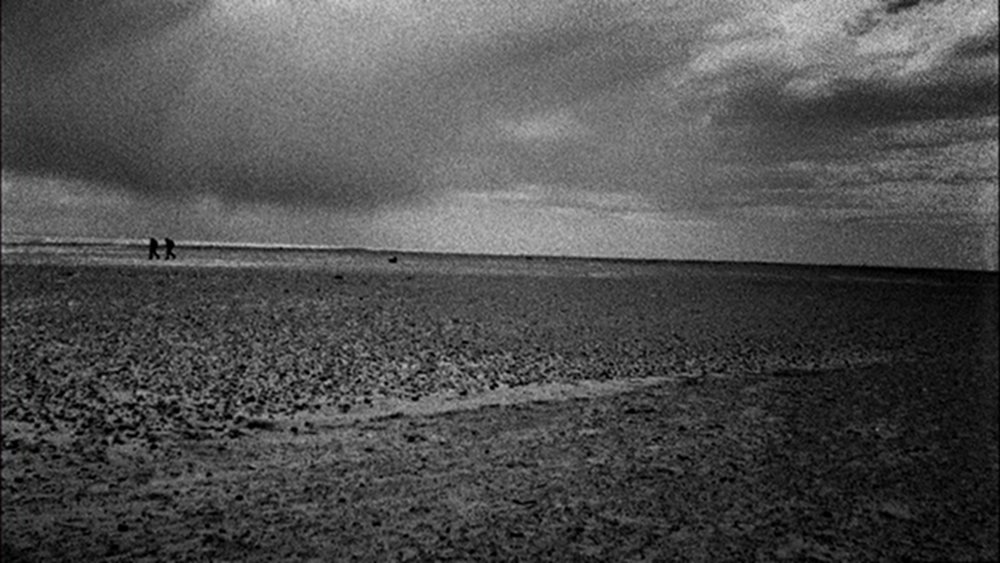Ruins — by definition — are neglect. Their guts are spilled and their condition deteriorates. Ruins exist because those who built them have been defeated, their inhabitants ‘decanted’ (to use the queasy terminology of British local authorities), or because our collective attention has turned elsewhere. And yet, under the masturbatory incantations of Instagram-fuelled ruin-lust, the empty corpse of the ruin enjoys a zombified digital afterlife, even while the material ‘fact’ of its offline existence is frequently overlooked.
Ruins are wounds, and we treat them accordingly; whether by cutting off the limb or turning our faces away in disgust (as well as peering voyeuristically at them in spooky fascination). As Svetlana Boym has remarked, ruins appear to be “physical embodiments of modern paradoxes reminding us of the blunders of modern teleologies and technologies alike.” And like all paradoxes, we find them distinctly unsettling – and powerfully alluring. The ruin — a wound, and therefore a sad and abject thing — reminds us of the mewling mortality of the physical world. Decay is only death, spilling out into the living world. And nobody likes to be reminded of death.
But what of ruins that are intentionally left to rot – of those whose decay will not be resisted or ignored, but actively encouraged?
Erasure is different from decay. That’s because erasure implies a desire to forget; an anticipation that others might remember the wrong thing. Ruins that are erased — that is, demolished — are deemed too dangerous to remain within the realm of real material. Or else they are cleared for future development, and so cease ‘being’ ruins. Hitler’s bunker was obliterated from the face of the earth. Today a carpark sits on top of it. Saddam’s towering Baghdad monument was first damaged, and subsequently dragged away – pulled literally from its pediment. The act of destroying a structure or a ruin becomes a denial of the forces which gave rise to it. Preservation – on the other hand – is often the fate of structures that must not be forgotten. The concentration camps of Auschwitz. The only standing structure that survived the Nuclear murder of Hiroshima. To preserve is to remember, whereas to negate is to forget.
In an interview I conducted with Martin Baraga of the Nonument Project (whose task is to document and map unwanted, forgotten, and abandoned architectural heritage), he observed that there is a “contradiction between the affirmative intentions of monuments and buildings when [they are] completed, and their present degradation which negates the wishes of their builders.” Negated architectural heritage – such as the rot of Nicosia airport in Cyprus, located in the country’s militarized buffer zone – is ripe with peculiar irony. In fact, there is some argument that the demolition of a ruin is also a kind of affirmation. After all, it acknowledges the power and sensitivity of the destroyed thing. To allow a structure to degrade – refusing to affirm it through erasure or preservation – is to look into the eyes of a thing while it suffers through its death. It is to say: you have no power over me, and I will give you nothing in return.

One of the decaying buildings on Orford Ness.
CC BY 2.0/Flickr
The shingle ‘spit’ of Orford Ness — a strange, geographical euphemism for a small archipelago located on England’s East Anglian coast — was at one time a site for secretive nuclear experimentation and advanced weapons testing. The so-called Atomic Weapons Research Establishment was used, during the Cold War, to develop a series of nuclear detonation devices prior to their being deployed in ‘live’ trials overseas. Constructed between March 1955 and July 1958, these facilities — headquarter buildings, observation towers, barracks, and the iconic concrete ‘pagodas’ which were used to test the detonators themselves — were in operation until 9 June 1971, when the last recorded trial took place. Until 1986, efforts were made to clear and dispose of ordnance from the area. Unexploded munitions remain at Orford Ness to this day. In other words, the site is both literally and figuratively ‘dangerous.’
While not involved in the literal fabrication of nuclear weapons, the site was complicit in the overarching supply chain that gave life to them. Since acquiring the site, the UK’s National Trust — the body responsible for looking after the site, granting access and documenting flora and fauna — have responded to this tainted site by adopting a policy of what many observers have called “managed decline”. Orford Ness will not actively be preserved or restored. Nor will it be scrubbed out. Instead, the buildings will be allowed to erode in their own time. As a National Trust spokesperson explained to me, “The landscape at Orford Ness is quite unlike any other and has been formed through hundreds of years of coastal change. That change continues today and, like much of the east coast, Orford Ness is constantly reacting to the forces of nature, with some parts of it eroding and some accreting.”
Already, weeds have begun the patient work of unlocking brick and corrugated iron from their moorings. The concrete ‘pagodas’ stand more like ancient burial mounds than hyper-advanced scientific testing facilities. For reasons of structural integrity, the National Trust demolished some 27 buildings, yet chose that – for the remainder – a policy of “curated decay” (to use Caitlin DeSilvey’s term) would be pursued. This policy of continued ruination (a term DeSilvey ascribes to the site’s managers) would involve neither active demolition nor structural intervention of any kind. Nothing would be done to stop their rot. This, they hoped, would retain the site’s symbolic value while divesting it of any material power. The signifier would swallow the signified, just as the waves would swallow the literal concrete and rebar of which the site was built.
Artists, filmmakers and musicians have — unsurprisingly — flocked to Orford in an effort to capture the astounding melancholy of its ghostly, abandoned structures. Like the modish ruin contemplation of 18th century Europe, such acts of observation reflect on the instability and the ultimate fragility of the past. Nothing is permanent. Everything fades. W.G. Sebald – on a literary walking tour of East Anglia – recounted a conversation with the boatman who ferried him to this isolated “spit” –
“As we crossed the river in his blue-painted boat, he told me that people still mostly avoided Orfordness [sic]. Even the beach fishermen, who were no strangers to solitude, had given up night-fishing out there, allegedly because it wasn’t worth their while, but in reality because they couldn’t stand the god-forsaken loneliness of that outpost in the middle of nowhere, and in some cases even became emotionally disturbed for some time.”
Some are repelled. Others drawn in. And Orford Ness is disturbing, disquieting. The site remains strangely fascinating to us. Ruins, after all, are wounds, and carry with them the properties of the abject. The wound reminds us that the coherence of health is fleeting and easily destroyed. And yet we struggle to look away. Iain Chambers came here to make languid, eerie field recordings. Grant Gee has shot film amongst the eerie pagodas. Sebald thought they looked like temples. Temples are often the resting place of bones.
To encounter a site of terror — a ‘tainted’ architecture — is to encounter an emergency situation. Peaceful fields and rugged stretches of coastline might remind us of violence that happened, or which terrified populations by being always on the point of happening. The coastlines of the British Isles and Northern Europe are scattered with such ‘gore infrastructure’; WW2 forts and gun emplacements mangled by vines; watch towers teetering into the waves; tank traps squatting on the rain-dark sand. To maintain these structures is a pointless endeavor (many are in unreachable or uninhabited areas), as is any plan to finally, fully obliterate them. They are neither dangerous enough nor too ‘memorable’ to be taken with any real interest. And so they are allowed to rot away, even while we stumble across them, take artful photographs of them, and continue to refer to them as part of an ongoing hauntology into a massacre-inflected past which continues to leak gratuitously into our present. They still pull us in, albeit weakly. Later in my interview with the Nonument project’s Martin Baraga, he referred back to Albert Speer’s well-known theory of ‘ruin value’, to “turn the destruction of architecture from the sign of the vanquished to the expression of ultimate triumph.” For Hitler and Speer, the ruined remains of Nazi Berlin would have the dramatic energy of the remains of ancient Rome. It was not in their plans that the city would be ground to powder, but that its ruins would become the lived city. This was, of course, perverse – condemning a population to abandon the metropolis and to live within a necropolis.
It was in the wake of the UK’s Toxteth riots of 1981 that the British government toyed with a policy of ‘managed decline’ for the city of Liverpool – as retributionary punishment for its energetic rejection of Tory government policy, for its summer of rage. Official papers released after this period saw ministers arguing that public money should not be spent on the ‘stony ground’ of this historically pro-Labour northern city. Chancellor Sir Geoffrey Howe noted, even while promoting the policy of ‘managed decline’, that the term should not be used, “even privately”, because of its deeply incendiary nature. Writing about these events, Simon Parker makes the connection between place, the body, and its wounds even more explicit in the case of Liverpool: that the government sought “autotomy – the conscious abandonment of a damaged or diseased part of the body politic in order to preserve the healthy remainder.” As much as curated decline might be all about symbolism, it has clear real-world effects.
Clearly, ‘managed decline’ is ruination with teeth; granting it extraordinary powers above the simple fact of indifferent decay. Managed decline is strategic and knowing withdrawal – and it has consequences both punishingly violent and creatively, temptingly empowering (depending on how they are being delivered, and by whom). Where the decline of Orford Ness might help us to disentangle ourselves from our violent nuclear past, the case of Liverpool is evidence of managed decline as a form of vicious spatial policy; a death by intentionally careless driving. Social murder.
Alternatively, the ‘allowed ruin’ might function as a kind of negative monument. In contrast, a ‘living’ structure will only constantly displace the ability to find solace or significance in it. The bombs which tore through London’s transport infrastructure in 2007 caused damage to areas that were not screened-off and preserved, but repaired and painted over – returned to the productive economy. How can we mourn when confronted by a coat of fresh paint? As far back as 1945, post-war British authorities in London confronted the healing power of permitted decay when managing the damage caused to London by WW2 bombs. Churches such as St. Dunstan-in-the-East, of which only its steeple (built by Christopher Wren) and North and South walls survived, have been left to flowers and weeds; not entirely abandoned, but neither restored. A wreck amongst the modern glass and steel towers. As ivy crawls over its exposed skeleton, the structure is slowly returned to nature. It will not survive. And that is the point; a haunting and powerful reminder not only of the war which burned the city to the ground, but an empowering message that all wounds eventually fade – given time. Warsaw did much the same in allowing its mounded war rubble to become grass-strewn parks.
Bomb-damaged churches; concrete war boxes hidden on the crumbling sides of sea-facing cliffs; ghostly facilities once used to test weapons of idiotic murder. These sites are anonymous as much as they are packed with significance. Reclaimed by nature, their slow decay frees us of any living human link to them; the risk that their preservation or destruction will activate still-heated socio-political divisions has already been wrenched away. Palaces of Soviet culture fall into ignored disarray. Why bother, when we’ve got so much else on our plate?
To leave a building in ruins might help to neutralise its tainted past, but it might also serve more nefarious policies. In Jerusalem, Israeli forces descend upon Palestinian homes and raze them to the ground. “Throughout our city,” observe Akram Salhab and Dahoud Al Ghoul, “these ruins are left as monuments to Israel’s demographic plans. As children, these partly demolished ruins were ideal venues for games of hide and seek.” Clearly, policies of ‘managed decline’ flow in one direction, and it would be remiss not to question the dynamics of power which are exerted when a building is condemned to such a slow, ailing death. Places of atrocity embody an altered social topography – they are no longer ‘just’ places. And so, how we deal with such territories has lasting significance. The erasure of a ruin can be an act of resistance against a terrorized past, but it can also serve to terrorize the present, or to hold it in continued thrall to an un-criticised history (Owen Hatherley has written eloquently on the continued presence of fascist memorials to Mussolini and Franco in Italy and Spain respectively, despite near universal condemnation of their actions). In Germany, in contrast, Hitler’s memorials – his entire absolutist architecture – has largely been erased. Clearly, the continuity of certain ‘tainted’ architectures and memorials is a sensitive issue, and one that won’t easily be resolved by a simple dichotomy of ‘preserve or destroy.’ But, as Martin remarked during our exchange of messages, the “absence of maintenance” is a form of destruction without destruction being involved. Ruination is always already happening.
Orford Ness – like many other sites of state-sponsored murder – might, ultimately, benefit from its erosion. Over time, these buildings will become increasingly unlocked from their past. What once seemed solid, permanent, and undeniable now appears fallible and weak. As weeds accelerate over the crinkled buildings and yards, our dependence on this past is revoked. It is not a memorial ‘to’ anything, because it is not treated reverentially. Nature will reclaim it, and drag its bones into the sea. Could this be a way to escape other such tainted histories, to break their spell upon us? Only time will tell.
Top image: Interior of one of the structures on Oxford Ness. CC BY 2.0/Flickr


